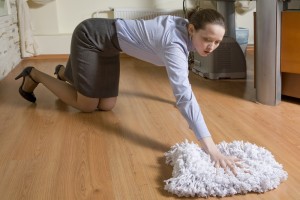6 Must-Have HVAC Health & Safety Products
HVAC Health & Safety Products are optimally matched so you can benefit not only from efficient installation and reduce operational costs, but also form an additional layer of security against system failure. Today let’s walk through a rundown of top HVAC products that are perfect for your air heating and cooling needs.
- HVAC Safety Glasses
Protect yourself by picking HVAC safety glasses that comply with the latest industry standard. For instance, Jackson Nemesis CAMO Safety Glasses w/ Amber Lens is a useful HVAC safety product for a vast range of applications. They come with a unique camouflage design and several types of lens tints to make HVAC works easier and safer.
- Multi-Task Light Gloves
Eliminate the fatigue and the risks of hand injury while working on HVAC systems. Invest in a high quality safety glove that that provides high levelsb of illumination for any task. You’d surely love the efficiency of MCR RED Multi Task Light Gloves made with sophisticated finger construction that delivers high-intensity LED lights. They are designed from synthetic leather and can be utilized for different kinds of tasks.
- Safety Vests
All HVAC workers should use a high-visibility safety vest. When looking for a safety vest, you should always look into the background colors of your working area, so you won’t blend into it. For example, if you’re working on a blacktop with white safety cones, you might want to choose a high-visibility safety vest like Orange Surveyors Vests with THINK SAFETY Imprint on Back.
- Hard Hats
One of the most important HVAC Health & Safety Products is hard hats. They protect the head from potential injuries due to falling objects, electric shock or impact with debris. Experts recommend HVAC safety hard hats that are designed from a protective polyethylene shell such as MSA V-Gard Cap Style Hard Hats with One Touch Suspensions. They are designed for superior impact and puncture resistance.
- Safety Coverall
Safety coveralls for HVAC works should be comfortable, functional and provide the necessary safety level of contractors. It’s a smart ideal to invest in high quality HVAC clothing such as Indura Flame Resistant Coverall. It weighs only 9 ounces and is designed with a unique Khaki color style. Theses safety clothings provide optimum flame resistance. Thanks to its flame-retardant polymer.
- Hearing Protection Products
HVAC Health & Safety Products for hearing protection including earplugs are designed for workers who work in noisy settings. These safety products are important not only to protect your hearing from loud noise but also for your safety. Purchase a high-performing hearing protection product like Howard Leight USA Earplugs Uncorded. These earplugs have patriotic colors that also help increase visibility. They easily adapt to your ear canal’s shape and they are very comfortable to wear.
In a working environment where health and safety are very crucial, it is important to choose the right tools and apparels. To those who work in the HVAC industry, the above-mentioned HVAC Health & Safety Products are all you need to keep HVAC jobs much easier, more convenient, and safer.
Author Bio (Withrow Mechanical Inc)
Withrow Mechanical Inc is a highly dependable HVAC company that specializes in residential and commercial heating and cooling solutions. The company aims to provide customers with top quality products and services that are unique to every situation. While doing this, they strive to keep all HVAC projects on time and within the budget of their customers. Committed to customers’ complete satisfaction, Withrow Mechanical Inc. stands behind all of their workmanship for the best HVAC solutions. http://withrowmechanical.com




